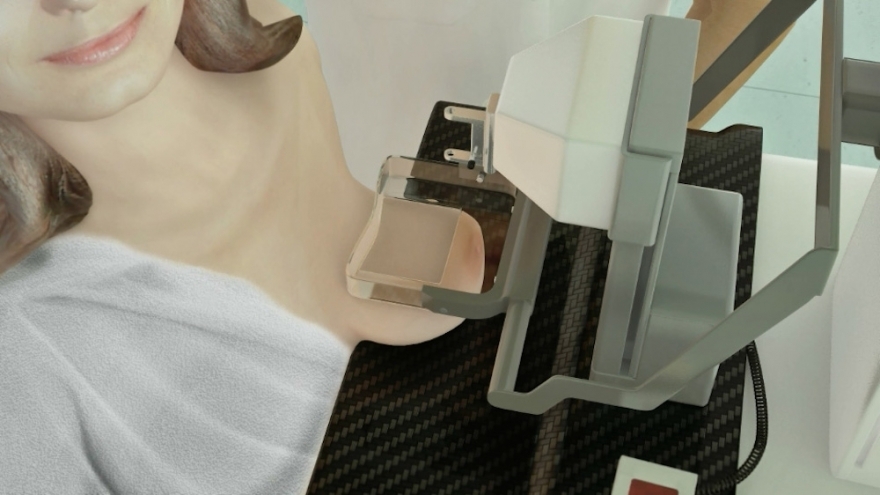Mammography
What is it?
What is it?A mammography is an X-ray test of both breasts, used to detect lesions. It is often performed in combination with an ultrasound. This test can also be performed for the prevention of breast cancer.
When is it indicated?
When is it indicated?- For all women between 50 and 69 years old: a systematic screening every two years.
- For women who are younger than 50 years old or who are older than 69 years old: a systematic screening is not recommended. It can be helpful, however, for certain risk groups. This should be discussed with your physician.
Test procedure
Test procedureThings to think about
- Bring any available previous imaging with you.
- Inform your physician or nurse if you are pregnant (or suspect you may be).

In order to evaluate the glandular and muscular tissue in its entirety, three images are taken of each breast from various directions. The breast is positioned above a digital detector, which then presses down on the breast. This pressure is necessary to spread out the tissue and to obtain a clear, sharp image. The pressure can feel a bit painful, but it only lasts a few seconds. Once the image is taken, the pressure releases automatically. The images are sent to a digital archive. The radiologist and the requesting physician (gynaecologist) can view the images in the digital medical chart with secure access. An additional image, such as an enlarged image, is sometimes necessary.
Centres and specialist areas
Centres and specialist areas
Something wrong or unclear on this page? Report it.
Latest publication date: 07/08/2024
Supervising author: Dr Elzo Kraemer Ximena, Dr Verschueren Eva, Dr Schoofs Christophe










